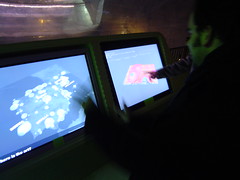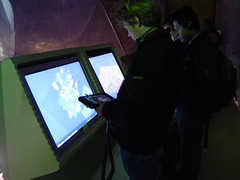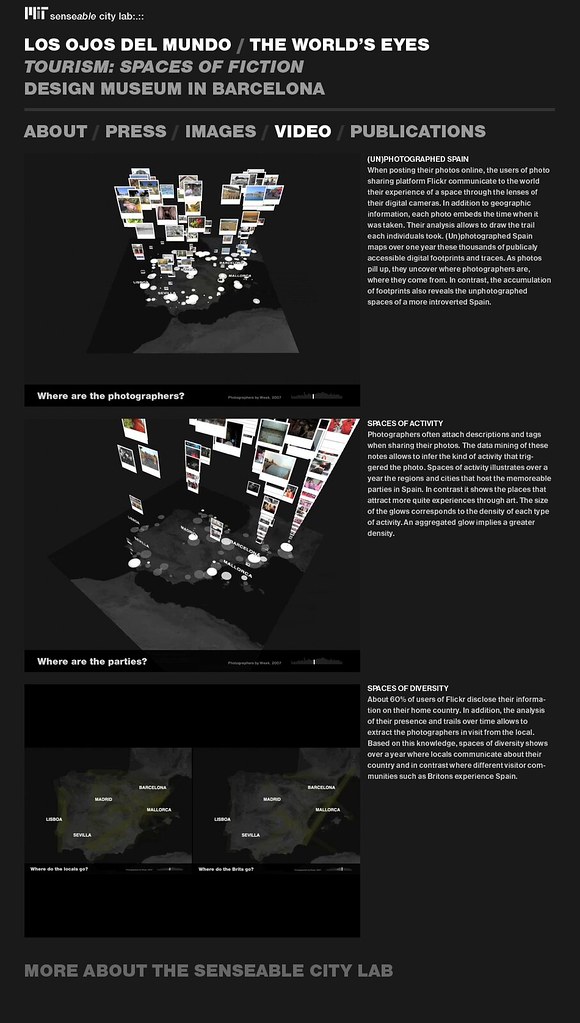Los Ojos del Mundo / The World's Eyes
Posted: December 4th, 2008 | No Comments »This week opened the new Design Museum in Barcelona with the exhibition Tourism: Spaces of Fiction that features los ojos del mundo (The World’s Eyes) a project I led in collaboration with designer David Lu and the MIT SENSEable City Lab. Based on my research work that analysis Flickr georeferenced photos to uncover tourists density and movement, we developed several spatio-temporal visualizations that give a novel perspective of tourism in Spain and its neighbors:
Los ojos del mundo provides insights to these question from the digital photos publically shared on the web by people visiting Spain. Through data mining and visualization techniques, it uncovers the evolutions of the presence and flows of tourists. As photos pill up to reflect the intensity of the tourist activity, they uncover where tourists are, where they come from and what they are interested in capturing and sharing from their visit. The analysis and mapping of this data allows understanding the attractiveness of leisure cities and their points of interest. In contrast it also reveals the unphotographed regions of Spain still free from the tourist buzz.
The project web site contains the visualizations of three main stories of the piece.
Relation to my thesis: Transforming a research work into a design piece was a challenge that implies speaking a different language in phase with designers and architects. In this project, it meant emphasizing the communication of the data on the esthetic and the experience. In the end result, it was important to show the human side of the data and reveal the content of the pictures that slightly neglects the analysis of the density and movement of photographers.
However, along the process, David developed some impressive concept sketches that could actually return to the research world as part of a visual analytics tool for the study of digital footprints. The most promising include Pilgrimage photographer trails versus all photos, Spain as a grid, trails with camera movements, accumulated density and trails, density in Barcelona, trails cabspotting style, and aggregated path with real-time density and photos.
I believe this is a good example of how research can get strength from design and vice versa. This type of “urban demo” certainly helps in raising the attention beyond my research community on the potentials and implications of my work, or in other words it can help “stretch the imagination” of a large public.


Stretching the first visitors’ minds


